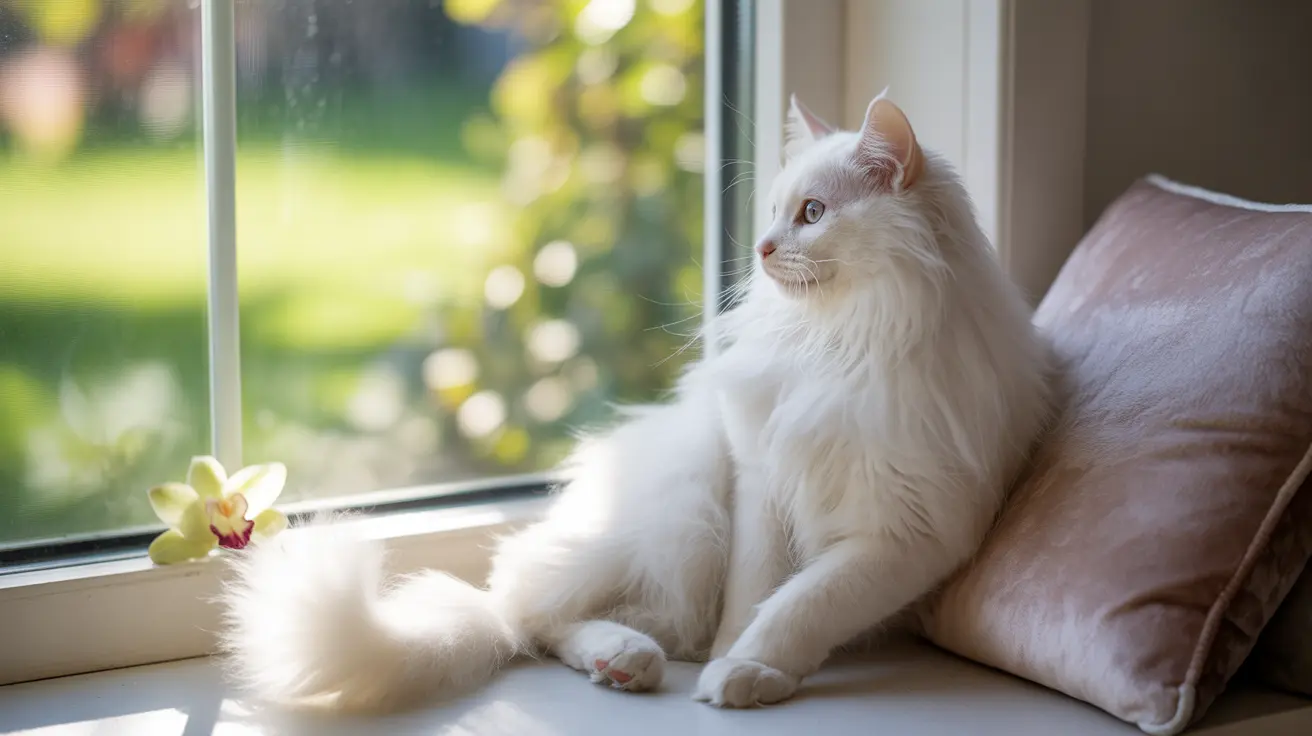The Turkish Angora, one of the world's most elegant cat breeds, showcases an impressive variety of coat colors and patterns. While traditionally known for their pristine white coats, these graceful felines actually come in a stunning array of colors that can surprise even experienced cat enthusiasts.
In this comprehensive guide, we'll explore the fascinating world of Turkish Angora colors, from their most iconic shades to rare variations, while discussing important health considerations and care tips for each color variety.
Traditional Turkish Angora Colors
The classic white Turkish Angora holds a special place in the breed's history. This color remains the most recognizable and historically significant, particularly in their native Turkey, where they're considered a national treasure. White Angoras often feature striking blue eyes or the highly prized odd-eyed combination (one blue, one amber or green).
However, the breed's color palette extends far beyond white, including:
- Solid colors (black, blue, red, cream)
- Tabby patterns (classic, mackerel, spotted)
- Tortoiseshell and calico variations
- Bi-color combinations
Genetics and Color Inheritance
The genetics behind Turkish Angora colors are fascinating. The white coat results from a dominant white gene (W), which masks other colors. This same gene can influence hearing ability, particularly in blue-eyed white cats. Red coloring is sex-linked, appearing more frequently in males, while tortoiseshell patterns are almost exclusively found in females.
Recognized Color Patterns
Modern breed standards accept an impressive range of colors and patterns:
- Classic and mackerel tabby patterns
- Bi-color combinations with white
- Smoke and shaded variations
- Tortoiseshell and calico patterns
- Solid colors in various shades
Health Considerations for Different Colors
Certain colors come with specific health considerations. White Turkish Angoras, especially those with blue eyes, have a higher likelihood of congenital deafness. Additionally, white-coated cats need extra protection from sun exposure to prevent skin damage and potential skin cancer.
Care Requirements by Color
Different colored Turkish Angoras may require varying care approaches:
- White cats need sun protection and regular cleaning to maintain coat brightness
- Darker colors may show dust more readily
- All colors benefit from regular grooming to maintain their silky coat texture
- Particular attention should be paid to skin health in light-colored cats
Frequently Asked Questions
What are the most common and rare colors of Turkish Angora cats?
The most common color is white, followed by solid colors like black and blue. Rarer colors include smoke variations and specific pattern combinations like tortie-and-white. Some colors, such as chocolate and pointed patterns, are not accepted in the breed standard.
How does the genetics of coat color work in Turkish Angoras, especially for white and red colors?
White coloring is caused by the dominant W gene, which masks other colors. Red coloring is sex-linked, carried on the X chromosome, making it more common in males. Various other genes control pattern distribution and color dilution.
Are there any health concerns related to specific Turkish Angora colors, like deafness in white cats?
Yes, white Turkish Angoras, especially those with blue eyes, have a higher risk of congenital deafness. White cats are also more susceptible to sunburn and skin cancer, requiring extra sun protection.
Which Turkish Angora colors and patterns are accepted by official cat breed registries?
Most major registries accept all colors except pointed patterns, chocolate, lavender, cinnamon, and fawn. Recognized patterns include solid colors, tabbies, tortoiseshells, calicos, and various bi-color combinations.
How should owners care for white Turkish Angoras to protect them from sun damage and related health risks?
Owners should limit sun exposure, particularly during peak hours, and consider applying pet-safe sunscreen to exposed areas. Indoor environments should include shaded areas, and regular veterinary check-ups should include skin examinations.
Conclusion
The Turkish Angora's diverse color palette adds to their charm and appeal as companion animals. Whether you prefer the classic white coat or are drawn to more unusual color combinations, understanding the implications of different colors can help provide better care for these beautiful cats.






